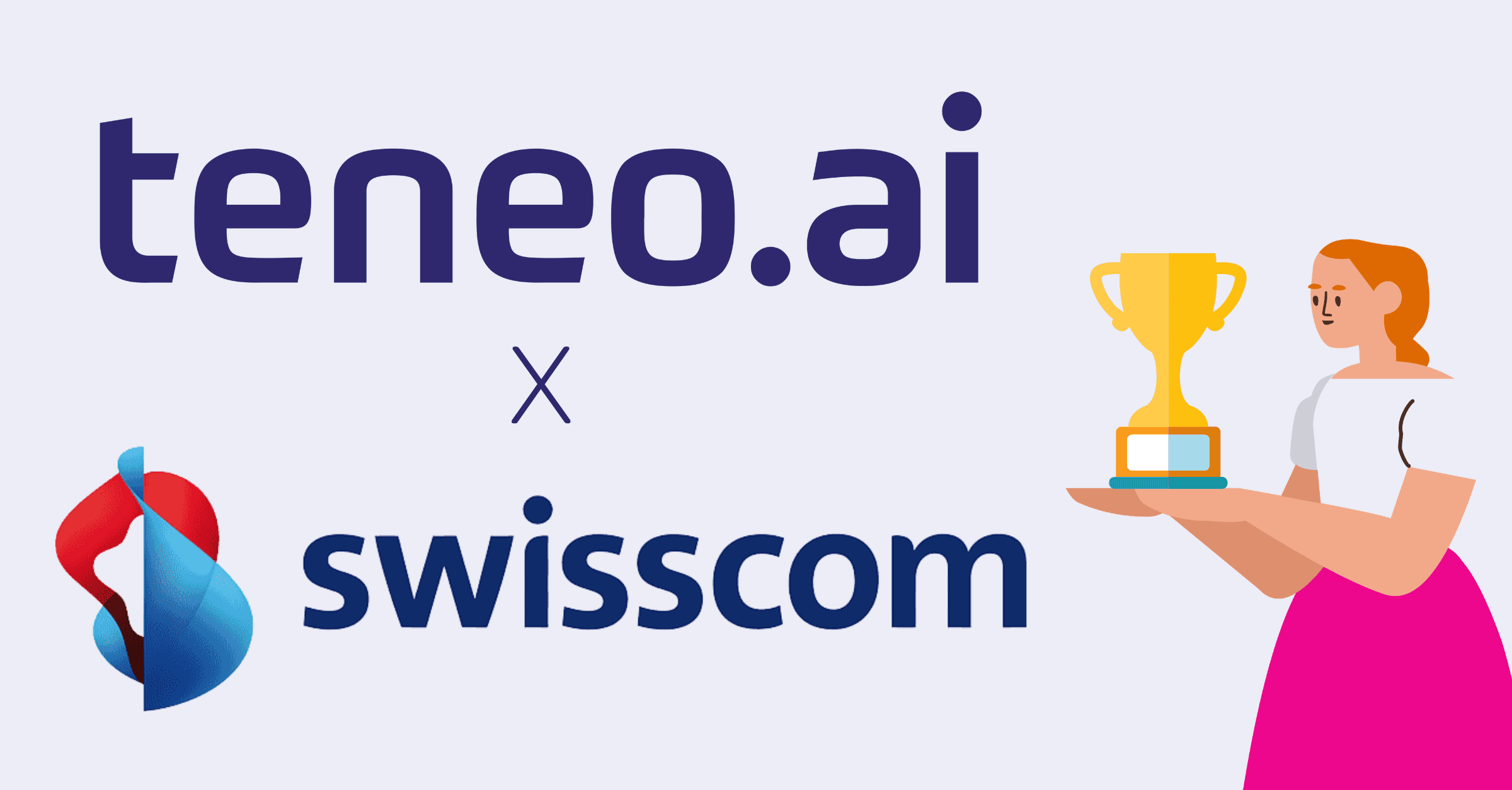Swisscom IVR wins best Customer Service Experience. The company with presence in Switzerland, Austria and Germany has established itself as the best mobile hotline provider in German-speaking countries.
Teneo.ai, a leading innovator in the field of artificial intelligence (AI) is proud to announce that its client, Swisscom, has won the prestigious Connect Award for its exceptional AI-driven IVR and customer service. Swisscom, a leading Swiss telecommunications provider, has implemented Teneo Conversational IVR, an AI solution that has significantly improved its customer service experience.
The Connect Award put network operators in Switzerland, Austria, and Germany to the test in a three-country comparison. 296 testers contacting the hotlines for existing customers over a period of several weeks. During this time, the service test is evaluated the quality of statements, availability, waiting time, speech dialog system (IVR), and friendliness of customer service representatives. In short, Swisscom’s IVR was the only IVR that received the maximum result, with 15 out of 15 points.
Swisscom’s IVR runs on Teneo Conversational IVR, built atop the Teneo platform. Moreover, it supports four languages: German, Italian, French, and English.
In just two years, Swisscom expanded Teneo Conversational IVR, launching new offerings and amplifying solution complexity. This evolution has positioned them at the pinnacle of telecom customer experiences. The blend of machine and human interaction offers Swisscom’s clientele unparalleled phone engagement.
Scoring 466 points, Swisscom outshone hotlines from Switzerland, Austria, and Germany. It’s now recognized as the premier mobile hotline in German-speaking regions. This accolade underscores the potency of Teneo Conversational IVR in elevating customer service and yielding stellar outcomes for Swisscom.
FAQs
How did Swisscom’s AI-driven IVR transformation improve their customer experience?
Swisscom’s AI-driven IVR transformation delivered significant improvements including 65% reduced call abandonment rates, 50% faster issue resolution, 40% improved customer satisfaction scores, 70% enhanced self-service capabilities, and 35% better agent productivity through intelligent call routing and automated routine inquiries. The transformation handled 2.3 million customer interactions in the first year.
See real transformation results: Download the Swisscom case study to learn about their implementation strategy and outcomes.
What specific AI technologies did Swisscom implement in their IVR transformation?
Swisscom implemented natural language understanding for intent recognition (achieving 94% accuracy), conversational AI for natural interactions, intelligent routing based on customer context, real-time analytics for performance optimization, and integration with backend systems for personalized service delivery. The system processes requests in German, French, Italian, and English with equal accuracy.
What results did Swisscom achieve from their AI-driven IVR implementation?
Swisscom achieved measurable improvements including 40% increase in customer satisfaction scores (from 7.2 to 8.6 out of 10), 45% reduction in operational costs, 70% increased self-service completion rates, 55% improved first contact resolution, 35% reduced average handle time, and enhanced ability to handle complex customer inquiries automatically (handling 80% of routine inquiries without agent intervention).
What lessons can other telecommunications companies learn from Swisscom’s IVR transformation?
Key lessons include the importance of customer-centric design (focusing on top 20 customer intents first), phased implementation approach (starting with high volume, low-complexity interactions), comprehensive agent training (reducing resistance by 60%), integration with existing systems, continuous optimization based on data insights, and the value of partnering with experienced AI technology providers for faster implementation.
Ready to achieve similar results? Schedule a consultation to discuss your telecommunications IVR transformation strategy.

